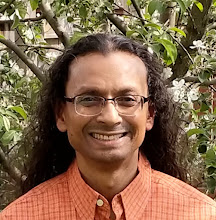This is the fourth of the twenty Kundalini Kriyas of Kriya Yoga. If you have not completed my free online course, please download and complete that first.
This kriya continues directly from the last kriya. Eyes are open, breath is fully exhaled, and your head is drooped forward while maintaining your focus on Mooladhara. Fold your tongue back into Kechari Mudra. Mentally repeat "Mooladhara" three times and "Arohan" once then begin Ujjayi inhalation while moving your concentration along the Arohan passage up the front of the body through the Kshetrams. Mentally repeat the name of each Kshetram as you pass by it: Swadhisthana, Manipura, Anahata, Vishuddhi.
At Vishuddhi, move your head up and droop it back as your concentration reaches Bindu. Hold your breath and mentally repeat "Bindu" three times and "Awarohan" once then begin Ujjayi exhalation. Move your head to a forward facing position and close your eyes in Unmani Mudra while moving your concentration along the Awarohan passage down the back of the body through the Chakras. Mentally repeat the name of each Chakra as you pass by it: Ajna, Vishuddhi, Anahata, Manipura, Swadhisthana, Mooladhara. At Mooladhara, open your eyes and droop your head forward to begin the next round. Complete eleven rounds, then go to the next kriya.
A video describing and demonstrating this kriya is presented below.












